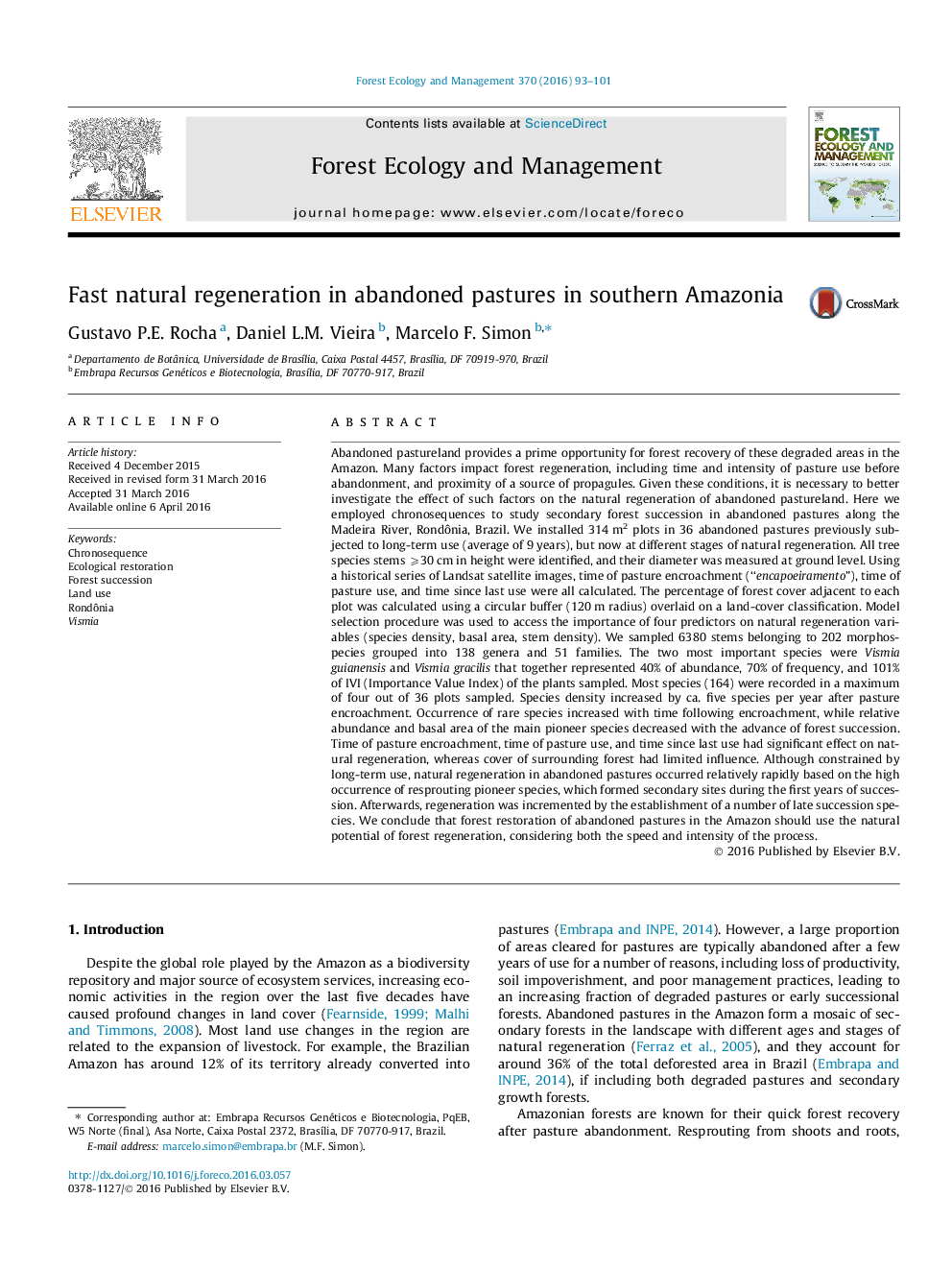| کد مقاله | کد نشریه | سال انتشار | مقاله انگلیسی | نسخه تمام متن |
|---|---|---|---|---|
| 86001 | 159156 | 2016 | 9 صفحه PDF | دانلود رایگان |
• Abandoned pastures were surveyed for vegetation attributes and history of use.
• Species density increased by five species per year after pasture encroachment.
• Vismia dominated during first years but were replaced by late succession species.
• History of use, but not adjacent forest cover, influenced natural regeneration.
• Restoration of pastures should use the natural potential of forest regeneration.
Abandoned pastureland provides a prime opportunity for forest recovery of these degraded areas in the Amazon. Many factors impact forest regeneration, including time and intensity of pasture use before abandonment, and proximity of a source of propagules. Given these conditions, it is necessary to better investigate the effect of such factors on the natural regeneration of abandoned pastureland. Here we employed chronosequences to study secondary forest succession in abandoned pastures along the Madeira River, Rondônia, Brazil. We installed 314 m2 plots in 36 abandoned pastures previously subjected to long-term use (average of 9 years), but now at different stages of natural regeneration. All tree species stems ⩾30 cm in height were identified, and their diameter was measured at ground level. Using a historical series of Landsat satellite images, time of pasture encroachment (“encapoeiramento”), time of pasture use, and time since last use were all calculated. The percentage of forest cover adjacent to each plot was calculated using a circular buffer (120 m radius) overlaid on a land-cover classification. Model selection procedure was used to access the importance of four predictors on natural regeneration variables (species density, basal area, stem density). We sampled 6380 stems belonging to 202 morphospecies grouped into 138 genera and 51 families. The two most important species were Vismia guianensis and Vismia gracilis that together represented 40% of abundance, 70% of frequency, and 101% of IVI (Importance Value Index) of the plants sampled. Most species (164) were recorded in a maximum of four out of 36 plots sampled. Species density increased by ca. five species per year after pasture encroachment. Occurrence of rare species increased with time following encroachment, while relative abundance and basal area of the main pioneer species decreased with the advance of forest succession. Time of pasture encroachment, time of pasture use, and time since last use had significant effect on natural regeneration, whereas cover of surrounding forest had limited influence. Although constrained by long-term use, natural regeneration in abandoned pastures occurred relatively rapidly based on the high occurrence of resprouting pioneer species, which formed secondary sites during the first years of succession. Afterwards, regeneration was incremented by the establishment of a number of late succession species. We conclude that forest restoration of abandoned pastures in the Amazon should use the natural potential of forest regeneration, considering both the speed and intensity of the process.
Figure optionsDownload as PowerPoint slide
Journal: Forest Ecology and Management - Volume 370, 15 June 2016, Pages 93–101
